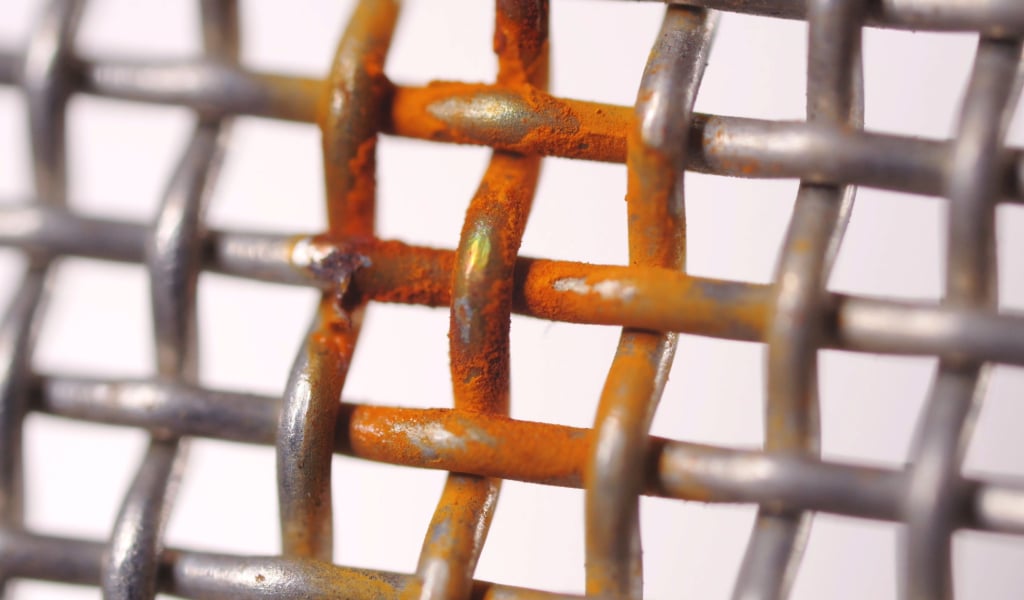Corrosion Resistance in Desalination Systems: Choosing the Right Alloy
Saltwater desalination systems operate in one of the most corrosive environments in industrial processing. Constant exposure to chloride-rich seawater, high temperatures, and turbulent flow conditions accelerates material degradation, leading to pitting, crevice corrosion, and stress corrosion cracking.
When components like filters, piping, and heat exchangers fail prematurely, it results in expensive downtime, increased maintenance costs, and reduced overall system efficiency.
To combat these challenges, engineers must select materials with superior corrosion resistance. While 316 stainless steel is often used as a baseline, it lacks the durability needed for long-term performance in aggressive saltwater conditions. Alloys such as AVESTA 254 SMO, 904L, and Duplex stainless steels offer significantly better resistance to localized corrosion and mechanical stress, making them ideal for desalination infrastructure.
At W.S. Tyler, our mission is to help build cleaner, safer, and more reliable filtration systems. With over 150 years of experience in woven wire mesh manufacturing, we understand the importance of selecting the right materials to ensure longevity and performance in harsh environments like desalination.
This article explores the corrosion risks in desalination systems and compares the performance of AVESTA 254 SMO, 904L, and Duplex stainless steels against 316 stainless steel. You’ll learn about the chemical and mechanical advantages of each alloy, their suitability for different desalination components, and how choosing the right material can drastically improve system reliability and reduce overall lifecycle costs.
Why Corrosion Threatens Desalination Efficiency and Safety
Desalination systems such as reverse-osmosis (RO), operate under extreme conditions that accelerate corrosion. High salinity, elevated temperatures, turbulent flow, and dissolved oxygen create an aggressive environment for metal degradation. Chloride ions, in particular, penetrate protective oxide layers on stainless steel surfaces, initiating localized corrosion such as pitting, crevice corrosion, and stress corrosion cracking (SCC).
These forms of corrosion are often invisible until significant damage has occurred.
Corrosion directly impacts system performance. For example, scaling and corrosion on heat exchanger surfaces reduce thermal efficiency, increasing your energy consumption by up to 15% per millimeter of scale. In RO systems, corrosion of membrane housings and piping can lead to pressure drop, reduced permeate flow, and compromised water quality.
These inefficiencies translate into higher operating costs, more frequent maintenance, and potential system shutdowns.
Interested in discovering more about the costs of desalination and how you can learn to save money in your system? Discover more in our article below:
Beyond performance, corrosion poses serious safety risks. Stress corrosion cracking in high-pressure components can lead to an increase in sudden failures, risking personnel safety and environmental contamination.
In desalination plants, failure in brine reject lines, pump housings, or storage tanks due to chloride-induced corrosion have been documented, often requiring emergency repairs and replacements that can have major costs for your systems.
Using 316 stainless steel as a minimum standard is increasingly seen as inadequate for long-term durability in desalination environments. While 316 offers moderate resistance to chlorides, it is prone to pitting and SCC under high salinity and temperature conditions. Upgrading to higher-performance alloys such as AVESTA 254 SMO, 904L, or Duplex grades significantly improves corrosion resistance, mechanical strength, and lifecycle reliability, reducing the total cost of ownership and helping to enhance your plants safety.
Differences in Corrosion-Resistant Alloys for Desalination
AVESTA 254 SMO is a super-austenitic stainless steel designed for extreme chloride environments. With a high molybdenum content (6-6.5%), elevated chromium (19.5-20.5%), and nitrogen (~0.2%), it achieves a Pitting Resistance Equivalent Number (PREN) of greater than 43, making it highly resistant to pitting, crevice corrosion, and stress corrosion cracking.
Its mechanical strength of Rp0.2 is nearly double that of 316 stainless steel, and it maintains excellent ductility and weldability. These properties make it ideal for desalination components like heat exchangers, brine reject lines, and seawater intake systems.
904L is a high-alloy austenitic steel with elevated nickel (23-28%) and molybdenum (4-5%) content. It offers strong resistance to sulfuric and phosphoric acids, as well as chloride-induced corrosion.
While not as robust as 254 SMO, it provides a significant improvement over 316 in terms of corrosion resistance and is often used in less aggressive zones of desalination systems. Its usual lower cost and good weldability make it a practical choice for budget-conscious upgrades.

Duplex grades like 2205 and super duplex SAF 2507 combine the benefits of austenitic and ferritic structures. They offer high strength, excellent resistance to chloride stress corrosion cracking, and good weldability.
Duplex alloys typically have a PREN of 35-40+, making them suitable for structural components, high-pressure piping, and RO membrane housings. Their lower nickel content also makes them more cost-effective than super-austenitic grades, while still outperforming 316 in durability and lifespan.
316 stainless steel contains only 2-3% molybdenum and has a PREN around 25, which is insufficient for long-term exposure to seawater. It is prone to pitting and crevice corrosion, especially in high-temperature and high-salinity conditions.
While it may be suitable for low-risk components, its use in critical areas often leads to premature failure, increased maintenance, and safety risks. Upgrading to 254 SMO, 904L, or Duplex alloys ensures better performance, reliability, and lower lifecycle costs across the board.
Choosing the Right Alloy for Success
Each alloy has strengths that make it better suited for specific parts of a desalination system. AVESTA 254 SMO is ideal for components exposed to high chloride concentrations and turbulent flow, such as brine reject lines, heat exchangers, and filter elements. While seawater intake screens are critical to system performance, they typically encounter lower chloride exposure, as chlorides are introduced later in the process. Its high PREN (>43) and resistance to stress corrosion cracking make it a top choice for long-term durability.
904L, while slightly less resistant, is often used in lower-pressure zones like pre-treatment piping and chemical dosing systems due to its cost-effectiveness and good weldability.
Duplex stainless steels, such as 2205 and SAF 2507, are preferred for structural components like RO membrane housings and high-pressure piping, offering a balance of strength and corrosion resistance.
Material selection in desalination is often a trade-off between upfront cost and lifecycle performance. 316 stainless steel may appear economical initially, but its susceptibility to pitting and crevice corrosion leads to frequent maintenance and early replacement.
904L offers a moderate upgrade with better corrosion resistance and lower nickel content than super-austenitic grades.
254 SMO, while usually more expensive, delivers superior performance in aggressive environments, reducing downtime and extending service life.
Duplex alloys provide a good middle ground, as they have a lower cost than super-austenitics but have excellent mechanical strength and corrosion resistance, especially in high-pressure zones.
The operating conditions of the desalination plant, which includes temperature, salinity, flow velocity, and chemicals used in cleaning, should be the main guide for alloy selection. For example, thermal desalination systems require materials that have high thermal conductivity and resistance to scaling and corrosion, making 254 SMO and Duplex ideal.
In reverse osmosis systems, where high pressure and brine exposure are common, Duplex alloys excel due to their strength and resistance to chloride-induced stress corrosion. Plants in tropical or polluted coastal areas may also benefit from super-austenitic grades due to their enhanced resistance to biofouling and aggressive seawater chemistry.
Ultimately, the right alloy depends on the specific application, budget, and performance requirements. Engineers should evaluate the PREN values, mechanical properties, fabrication needs, and expected lifespan of each alloy. Partnering with experienced suppliers helps to ensure that woven wire mesh components are manufactured with the optimal material for each use case.
By upgrading from 316 to advanced alloys, desalination systems can achieve greater reliability, safety, and cost-efficiency over time.
Investing in Corrosion-Resistant Alloys for Desalination Success
Corrosion is a persistent threat to the efficiency, safety, and longevity of saltwater desalination systems. While 316 stainless steel has long been the industry standard, its limitations in high-chloride environments make it a risky choice for critical components. Advanced alloys like AVESTA 254 SMO, 904L, and Duplex stainless steels offer superior resistance to pitting, crevice corrosion, and stress corrosion cracking, ensuring better performance and a longer overall service life, saving you time and money.
Upgrading to these high-performance materials is a strategic investment in system reliability. Whether you’re designing new infrastructure or retrofitting existing systems, selecting the right alloy for each application can reduce your maintenance costs, help prevent emergency failures, and improve your overall plant efficiency.
That said, it’s important to note that weaving higher-grade alloys presents significant manufacturing challenges compared to standard grades like 316. This is especially true in microfiltration applications and with sinter-bonding multilayer mesh configurations.
W.S. Tyler stands apart by having the expertise and capability to overcome these challenges, delivering precision-woven mesh solutions in even the most demanding alloy grades. In fact, we now have series-ready AVESTA 254 SMO mesh laminates engineered specifically for demanding seawater applications, combining surface and depth filtration in a multilayer sintered format. This capability positions us as a leader in corrosion-resistant mesh solutions for desalination systems.
At W.S. Tyler, we are committed to helping our customers build cleaner, safer, and more efficient filtration systems. With over 150 years of experience in wire mesh manufacturing, we provide corrosion-resistant solutions that stand the test of time, even in the harshest saltwater conditions.
To learn more about how woven wire mesh enhances your water filtration process and all of the benefits it provides, check out our blog below:
About Dylan Polz
Dylan is a Content Writer with 2 years of experience in marketing and SEO. Passionate about learning and strengthening his writing skills, he is currently expanding his expertise in particle analysis and woven wire mesh technologies. With a strong belief in the power of information to drive positive change, his goal is to develop content that supports cleaner, safer solutions across all industries.



